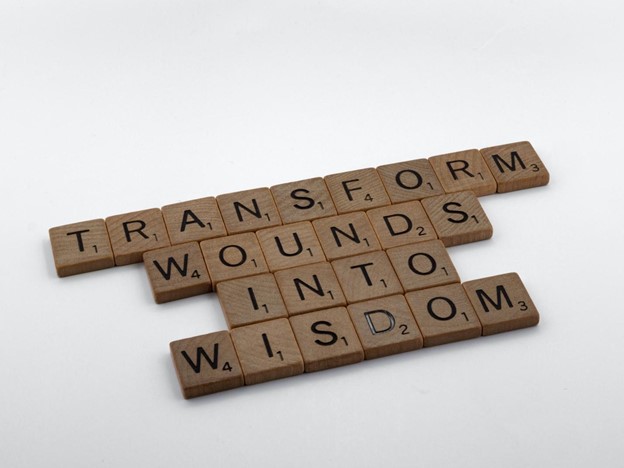With so many psychological treatments available, it’s no wonder that people struggle to figure out what the best treatment is for them. With emotions running high now more than ever throughout this global pandemic, one type of therapy that people may begin to consider exploring is Emotion-Focused Therapy (EFT). However, what is EFT, and what can it do for us?
EFT was primarily developed by Canadian psychologist Dr. Les Greenberg. As the name suggests, EFT focuses on people’s emotions, recognizing that “emotions are the captains of our lives” and are essential for self-development and well-being (Greenberg, 2004). Despite the necessity of emotions, they can still negatively impact our lives when they’re overwhelming, maladaptive, or unprocessed. Notably, our emotions are maladaptive when we have strong feelings of sadness, anger, hopelessness, etc. that seem to linger when they appear to be no longer helpful to our survival. It is these emotions that are targeted by EFT, and they undergo a process to be transformed.

Additionally, differentiating between primary emotions and secondary emotions is relevant here. Specifically, primary emotions are at the core of our “feeling” about something. Secondary emotions result from our reactions to our primary emotions, sometimes covering them up to protect us. By working through these secondary emotions, EFT then aims to access core maladaptive emotions to transform them, to feel something different in the same situation. Through this transformative process, people can feel and embrace what they need to, to be able to adaptively solve their problems.
EFT has three phases of treatment (Pos & Greenberg., 2007):
- Bonding and awareness
- Evocation and exploration
- Transformation and generation of alternatives

Bonding and Awareness
In the first phase of EFT treatment, the client is supported by a mental health professional in accessing their emotions in order to understand their experiences and put them into words. Notably, EFT can help people process their emotions and learn what these emotions are trying to tell them, rather than avoiding them. If clients struggle with labelling their emotions, the therapist then uses empathy and suggests to the client what they may be feeling, while still leaving room for the client to correct them if the emotion doesn’t match their experience (McGuinty, 2015). Once the core maladaptive emotion is identified, the therapist and client can then work toward understanding the root cause of the core emotion.

Evocation and Exploration
The second phase of EFT treatment involves the evocation and exploration of emotion (Pos & Greenberg, 2007). Using experiential techniques, such as role-play, therapists can aid clients in exploring their evoked emotions. In this way, clients can work through the emotions that they are avoiding to become more accepting of them.
Transformation and Generation of Alternatives
As treatment nears its end, emotions are transformed, and alternative emotions are generated. Transforming emotions in EFT means taking a maladaptive emotion and creating a more pleasant, positive emotion in its place. However, it does not make sense to simply get rid of that emotion, given that emotions are central to the human experience. Instead, clients must use their current emotions to create more adaptive ones so that new meanings can be made to construct a resilient and integrated self (Pos & Greenberg, 2007).
Emotion transformation is a therapeutic method conducted in session. EFT therapists help clients transform their emotions by focusing on the feelings that are not so dominant. For example, a dominant emotion may be fear, but a not so dominant emotion may be grief. This transformation can be accomplished through techniques such as two-chair work during therapy. In two-chair work, clients can sit beside an empty chair and engage in a conversation with the aspects of themselves that hinder their ability to accept their emotions, like their critical voice (e.g., “I always screw up”). Then, emotion transformation can occur when therapists validate and acknowledge their client’s emotions, leading their client towards self-validation and self-compassion.

Does EFT Actually Work?
The effectiveness of EFT has been supported by many studies, especially for the treatment of depression (Greenberg & Watson, 1998; Greenberg & Angus, 2004), complex trauma (Paivio & Pascual-Leone, 2010; Paivio & Nieuwenhuis, 2001), and anxiety disorders (Shahar et al., 2017; Timulak et al., 2017). EFT continues to be researched for other mental health conditions. EFT has also been adapted into Emotion-Focused Therapy for Couples (EFT-C) and Emotion-Focused Family Therapy (EFFT) to assist in treating problems between couples, as well as within the family, respectively.
The therapies listed above have also been supported by research. For example, EFT-C can help couples with depression (Denton et al., 2000; Dessaulles et al., 2003), while EFFT can assist families with children experiencing eating disorders (Robinson et al., 2015). EFFT is even effective when applied as a 2-day intensive workshop (Foroughe et al., 2019; Wilhelmsen-Langeland et al., 2020). In general, EFT and its adaptations have shown potential in helping with a wide range of mental health and interpersonal concerns.

Summary
Currently, there are many treatments available for a variety of conditions and circumstances, such as cognitive-behavioural therapy (CBT), dialectical behavioural therapy (DBT), mindfulness-based cognitive therapy (MBCT). Although all of these therapies can be effective in their own way, what’s important is identifying which of them works best for us. If you have tried other therapies, and still feel they don’t work for you, perhaps EFT can be a good next step. EFT may even be better suited to help you identify and label your most challenging emotions, allowing you to be present with your emotions while creating other adaptive ones. Overall, by practicing and learning how to regulate your emotions and transform them, you may feel more empowered to continue strengthening yourself and use adaptive emotions more efficiently.
Resources
To learn more about EFT and how you can receive treatment, check out these resources below:
- FPC’s Emotion-Focused Caregiver Workshop: https://familypsychology.org/workshop/
- Contact FPC for more information on EFT, EFFT and other therapies they offer: https://familypsychology.org/contact-us/
- To learn more about EFT, obtain training, or find books on EFT, visit the International Society of Emotion Focused Therapy: http://www.iseft.org/
- Visit Psychology Today to find a therapist in your area that practices EFT: https://www.psychologytoday.com/ca?tr=Hdr_Brand
References
Denton, W. H., Burleson, B. R., Clark, T. E., Rodriguez, C. P., & Hobbs, B. V. (2000). A randomized trial of emotion‐focused therapy for couples in a training clinic. Journal of Marital and Family Therapy, 26(1), 65-78. https://doi.org/10.1111/j.1752-0606.2000.tb00277.x
Dessaulles, A., Johnson, S. M., & Denton, W. H. (2003). Emotion-focused therapy for couples in the treatment of depression: A pilot study. The American Journal of Family Therapy, 31(5), 345-353. https://doi.org/10.1080/01926180390232266
Foroughe, M., Stillar, A., Goldstein, L., Dolhanty, J., Goodcase, E. T., & Lafrance, A. (2019). Brief emotion focused family therapy: An intervention for parents of children and adolescents with mental health issues. Journal of Marital and Family Therapy, 45(3), 410-430. https://doi.org/10.1111/jmft.12351
Greenberg, L. S. (2004). Emotion–focused therapy. Clinical Psychology & Psychotherapy: An International Journal of Theory & Practice, 11(1), 3-16. https://doi.org/10.1002/cpp.388
Greenberg, L., & Angus, L. (2004). The contribution of emotion processes to narrative change: A dialectical-constructivist approach. In L. Angus & J. McLeod (Eds), Handbook of narrative and psychotherapy: practice theory and research (pp. 331–350). Sage Publications.
Greenberg, L., & Watson, J. (1998). Experiential therapy of depression: Differential effects of client-centered relationship conditions and process experiential interventions. Psychotherapy Research, 8(2), 210-224. https://doi.org/10.1080/10503309812331332317
McGuinty, E., Nelson, J., Carlson, A., Crowther, E., Bednar, D., & Foroughe, M. (2016). Redefining outcome measurement: A model for brief psychotherapy. Clinical Psychology & Psychotherapy, 23(3), 260-271.
Paivio, S. C., & Nieuwenhuis, J. A. (2001). Efficacy of emotion focused therapy for adult survivors of child abuse: A preliminary study. Journal of Traumatic Stress, 14(1), 115-133. https://doi.org/10.1023/A:1007891716593
Paivio, S. C., & Pascual-Leone, A. (2010). Emotion-focused therapy for complex trauma: An integrative approach. American Psychological Association.
Pos, A. E., & Greenberg, L. S. (2007). Emotion-focused therapy: The transforming power of affect. Journal of Contemporary Psychotherapy, 37(1), 25-31. https://doi.org/10.1007/s10879-006-9031-z
Robinson, A. L., Dolhanty, J., & Greenberg, L. (2015). Emotion‐focused family therapy for eating disorders in children and adolescents. Clinical Psychology & Psychotherapy, 22(1), 75-82. https://doi.org/10.1002/cpp.1861
Shahar, B., Bar-Kalifa, E., & Alon, E. (2017). Emotion-focused therapy for social anxiety disorder: Results from a multiple-baseline study. Journal of Consulting and Clinical Psychology, 85(3), 238. https:// doi.org/10.1037/ccp0000166
Timulak, L., McElvaney, J., Keogh, D., Martin, E., Clare, P., Chepukova, E., & Greenberg, L. S. (2017). Emotion-focused therapy for generalized anxiety disorder: An exploratory study. Psychotherapy, 54(4), 361. https://doi.org/10.1037/pst0000128
Wilhelmsen-Langeland, A., Aardal, H., Hjelmseth, V., Fyhn, K. H., & Stige, S. H. (2020). An emotion focused family therapy workshop for parents with children 6-12 years increased parental self-efficacy. Emotional and Behavioural Difficulties, 25(1), 29-41. https://doi.org/10.1080/13632752.2019.1655921






